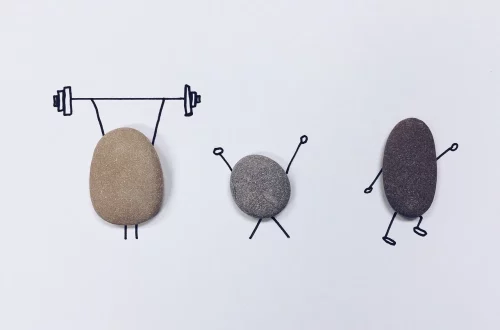
Effective Tear Stain Remover: Tips for a Spotless Pet Appearance
Keeping our beloved pets clean and presentable is an essential aspect of pet care. One common issue that many pet owners face is the unsightly tear stains that can accumulate around their pets’ eyes. These stains not only detract from your pet’s appearance but can also be a source of discomfort and concern for many pet parents. Tear stains are often more pronounced in certain breeds, particularly those with light-colored fur or prominent eyes. Factors contributing to tear staining include genetics, diet, and environmental conditions.
Understanding the reasons behind tear stains can help pet owners take proactive steps to address the issue effectively. While it might seem like a cosmetic problem, persistent tear stains can sometimes indicate underlying health issues that require attention. Therefore, it becomes crucial to choose the right tear stain remover and establish a consistent cleaning routine. In the following sections, we will explore different methods and tips for effectively managing tear stains, ensuring that your pet looks their best while also maintaining their overall health and well-being.
Understanding Tear Stains: Causes and Implications
Tear stains are often a result of excessive tear production, which can occur for various reasons. One of the most common causes is a condition known as epiphora, where tears overflow from the eyes and run down the face. This condition can be due to several factors, including allergies, eye infections, or even anatomical abnormalities. For instance, some dog breeds have shallow eye sockets, making them more prone to tearing.
Diet can also play a significant role in tear staining. Certain ingredients in pet food, particularly low-quality grains or dyes, can lead to increased tearing. A diet high in artificial additives can trigger allergic reactions in sensitive pets, contributing to tear production. Consequently, switching to a higher-quality diet that focuses on natural ingredients may help reduce the occurrence of tear stains.
Additionally, environmental factors such as dust, pollen, and smoke can irritate your pet’s eyes, leading to increased tearing and staining. Regular cleaning of your pet’s environment, including their bedding and living area, can help minimize these irritants. Moreover, ensuring that your pet is groomed regularly will help maintain their eye health and prevent tear stains from becoming a recurring issue.
It’s essential to monitor your pet for any signs of discomfort or infection, such as redness or swelling around the eyes. If you notice these symptoms, it may be a good idea to consult a veterinarian. They can provide insight into potential underlying health issues and recommend the most appropriate treatment options.
Choosing the Right Tear Stain Remover
When it comes to selecting a tear stain remover, there are numerous options available on the market. It’s essential to choose a product that is safe for your pet and effective at removing stains without causing irritation. Many tear stain removers contain natural ingredients, such as aloe vera or chamomile, which can soothe the skin while working to break down the staining compounds.
Before purchasing a tear stain remover, it’s crucial to read the label carefully. Look for products that are specifically designed for pets and avoid those that contain harsh chemicals or alcohols. Natural alternatives are often gentler on the skin and less likely to cause allergic reactions.
Another option is to use homemade solutions. Many pet owners opt for DIY tear stain removers made from ingredients like distilled water, apple cider vinegar, or even coconut oil. These homemade remedies can be effective and gentle on your pet’s skin. However, it’s important to test any new solution on a small area first to ensure that your pet does not have an adverse reaction.
Regardless of the product you choose, consistency is key. Regular cleaning of the affected areas will help prevent the buildup of stains. A gentle approach is essential; use a soft cloth or cotton pad to apply the solution to the stained area without causing discomfort to your pet.
Additionally, some pet owners find success with grooming tools designed to specifically target tear stains. These tools often include brushes or wipes infused with cleaning agents that can help lift the stains without irritating the skin. Incorporating these tools into your grooming routine can make a significant difference in maintaining your pet’s appearance.
Establishing a Cleaning Routine
Establishing a regular cleaning routine is one of the most effective ways to combat tear stains. Grooming your pet should be a positive experience for both you and your furry friend. Start by introducing your pet to the cleaning process gradually. Use treats and positive reinforcement to create a calm environment.
Begin by gently wiping away any existing tear stains with a soft, damp cloth. Make sure to use separate cloths or pads for each eye to prevent cross-contamination. This step is crucial, especially if your pet has any infections or irritations. After wiping, you can apply your chosen tear stain remover based on the instructions provided.
Frequency is also an important factor. Many pet owners find that cleaning their pet’s eyes two to three times a week is sufficient to keep tear stains at bay. However, this may vary depending on your pet’s breed and individual needs. Keep an eye on your pet’s eyes and adjust the cleaning schedule as necessary.
In addition to regular cleaning, maintaining a tidy environment can significantly impact tear stain recurrence. Regularly cleaning your pet’s bedding, toys, and living area will help reduce allergens and irritants that may contribute to tearing.
Lastly, ensure your pet is well-hydrated and on a balanced diet. Offering fresh water and high-quality food can help reduce tear production, making your cleaning efforts more effective. By combining these strategies, you can maintain a spotless appearance for your pet while also promoting their overall health.
Professional Grooming and Veterinary Advice
While many pet owners can manage tear stains at home, there are times when professional help is necessary. Groomers are trained to handle various pet care issues, including tear staining. A professional grooming session can provide a thorough cleaning and remove any stubborn stains that may not respond to at-home treatments. Additionally, groomers can offer advice on effective products and techniques tailored to your pet’s specific needs.
If tear stains persist despite your best efforts, it may be time to consult a veterinarian. Persistent tearing can indicate underlying health issues that require medical attention. Your vet can perform a comprehensive examination to rule out allergies, infections, or anatomical problems that may be contributing to the problem. They may also suggest specific treatments or dietary changes to help alleviate the issue.
Furthermore, some veterinarians may recommend specialized eye drops or medications if they determine that the tearing is due to an underlying condition. While these treatments may not be necessary for every pet, they can be crucial for those experiencing chronic tear staining.
In conclusion, while tear stains can be a common issue for many pets, they are manageable with the right approach. Consistent cleaning, choosing the appropriate products, and seeking professional advice when needed can help maintain your pet’s appearance and overall health.
*Disclaimer: This article is not intended as medical advice. If you have concerns about your pet’s health, please consult a veterinarian for professional guidance.*




